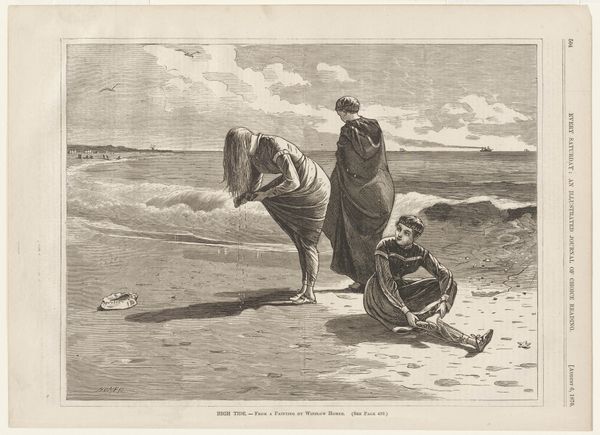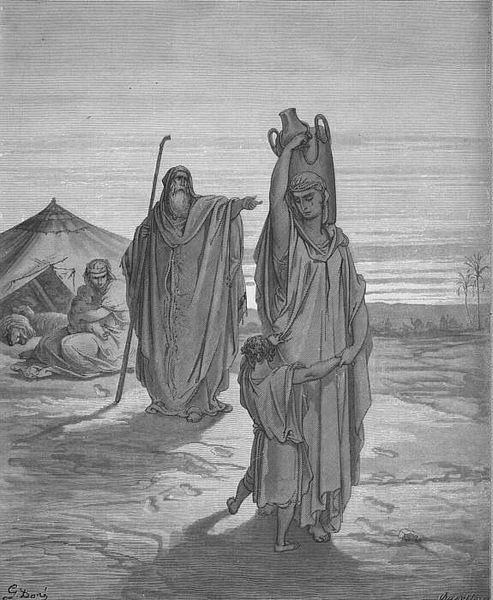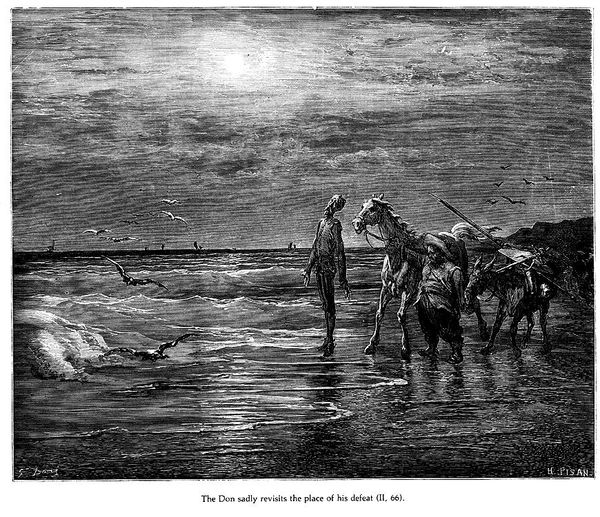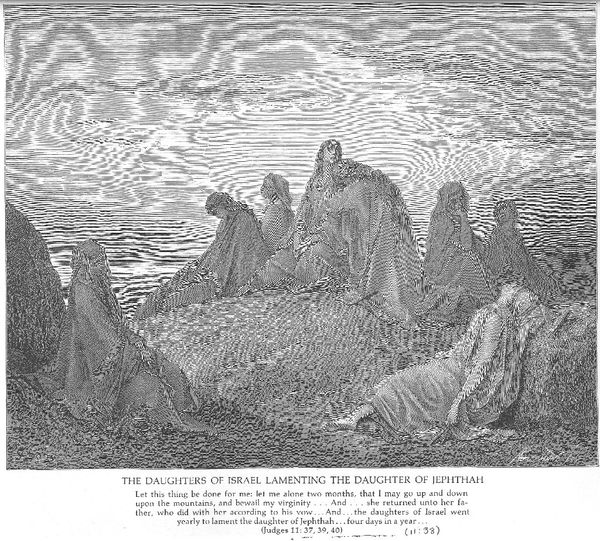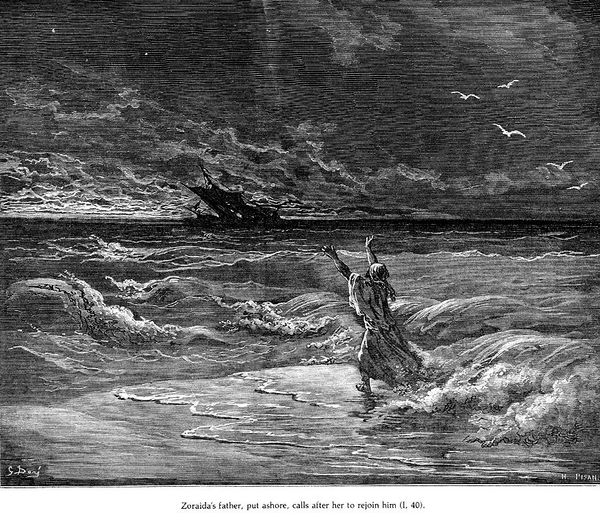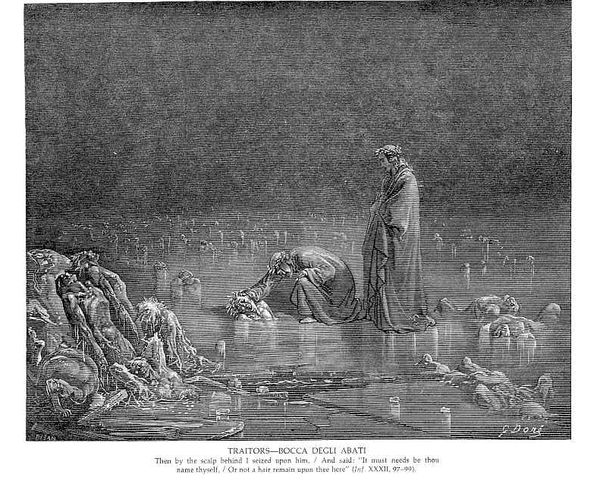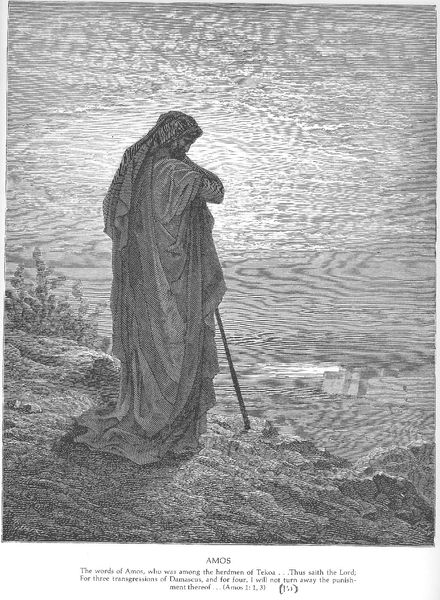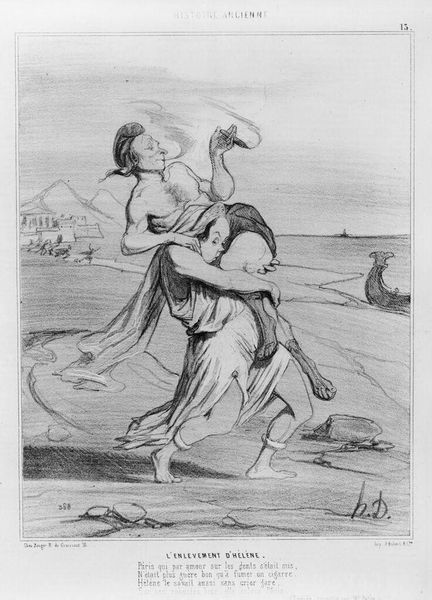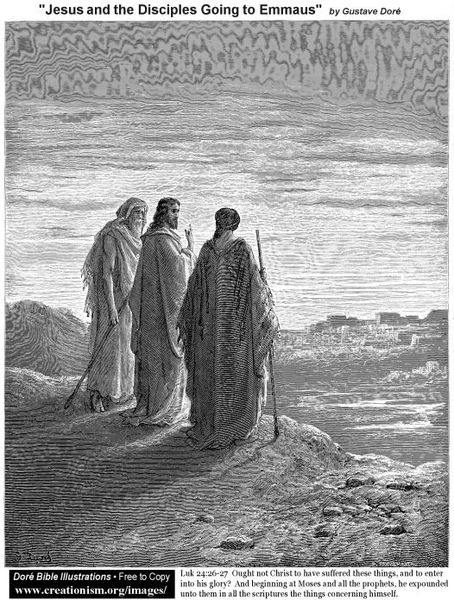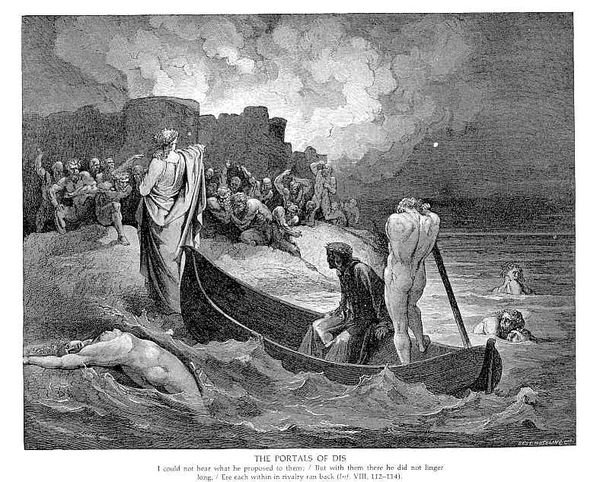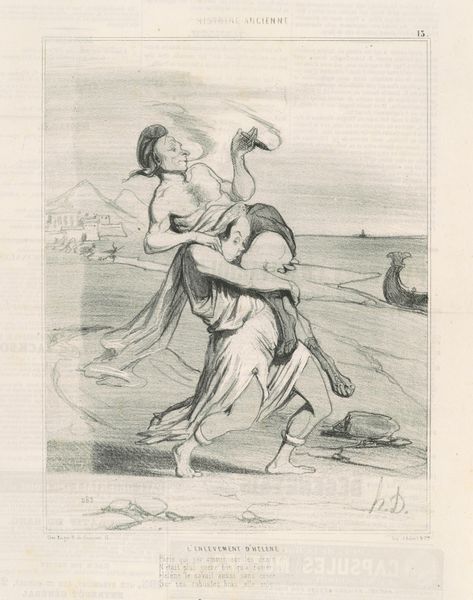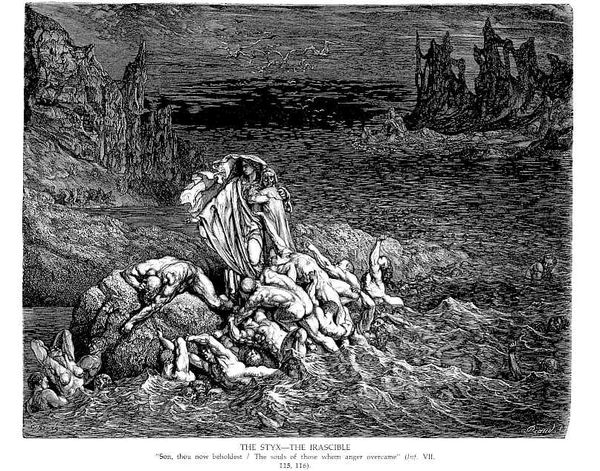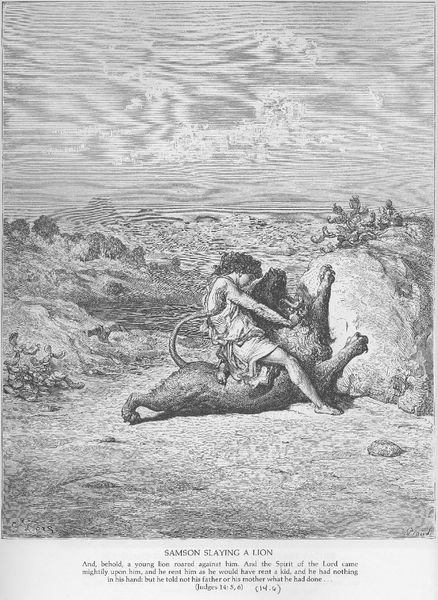
High Tide (from "Every Saturday," Vol. I, New Series) 1870
0:00
0:00
drawing, print, pencil
#
drawing
#
16_19th-century
# print
#
landscape
#
pencil
#
line
#
genre-painting
#
academic-art
#
realism
Dimensions: image: 8 7/8 x 11 3/4 in. (22.5 x 29.8 cm) sheet: 10 1/2 x 14 7/16 in. (26.6 x 36.7 cm)
Copyright: Public Domain
Editor: We're looking at "High Tide," a print made by Winslow Homer in 1870. It shows three figures at the beach. What immediately strikes me is how the composition is structured. What do you see in this piece from a structural perspective? Curator: Indeed. First, note how the arrangement relies heavily on the contrast between light and shadow to define form. Consider how Homer's precise lines, achieved through careful hatching and cross-hatching, construct both the figures and the landscape, building volume. Are you observing this? Editor: Yes, especially the shadow work around the figures and in the water, it creates a sense of depth. The linear work is extremely clear. Curator: The use of line emphasizes form and texture. The composition features the three figures arranged as a unified shape rather than separate individuals. Look closely at their attire; can you deduce their societal position? Editor: Well, the formality of the clothing, even on the beach, suggests they’re of a certain class and bound by specific conventions, but beyond this, the print’s design creates strong verticals, the standing figure, then drawing our eye horizontally across the beach, to distant bathers, as background. Curator: Precisely. How the linear quality shapes the forms within the broader composition draws the eye through multiple areas in the piece. Now, consider the horizon line and its position. Editor: It cuts right across. Is it designed to create tension, a kind of imbalance? Curator: Intriguing suggestion. This seemingly disruptive design generates interest, encouraging a formal engagement beyond the illustration's immediate representational function. Editor: It's interesting how focusing on the lines and composition brings new interpretations. Thank you. Curator: It's been enlightening. I learned to see your point regarding imbalance, challenging notions of artistic expression.
Comments
No comments
Be the first to comment and join the conversation on the ultimate creative platform.
